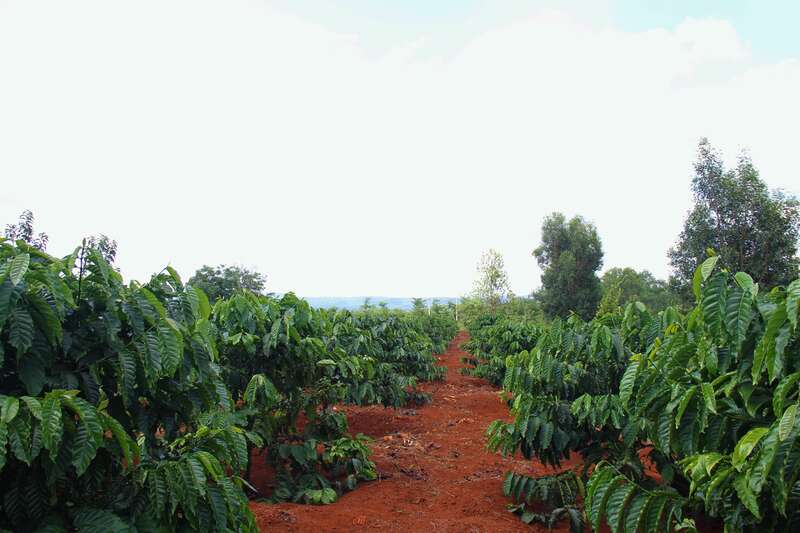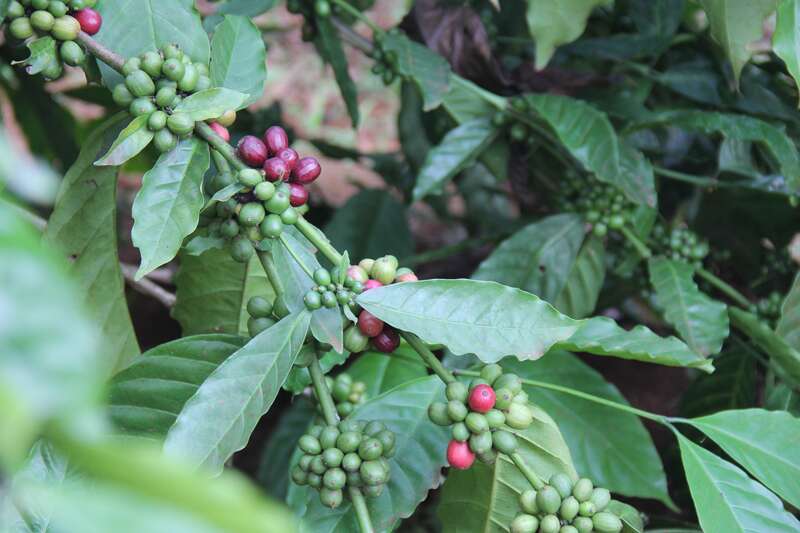What is the impact of the environment on coffee cultivation?
Professional coffee knowledge exchange more coffee bean information please follow the coffee workshop (Wechat official account cafe_style)

According to the Yunnan Coffee Association, the area of Yunnan coffee industry affected by drought this year is more than 2000 hectares, and the yield is expected to decline by 5 to 10 percent.
Vietnam's coffee production is also expected to fall sharply this year due to water shortages, Reuters reported.
Research by the International Centre for Tropical Agriculture (CIAT) shows that by 2050, climate change will cause half of the current global coffee producing areas to be unsuitable for growing coffee.
"Coffee growing areas will shrink significantly in the next 20 to 30 years because of climate change," said Annegret Brauss, project director of how the international industrial chain responds to climate change at the Geneva International Trade Center. In addition, extreme weather may pose other challenges to the coffee industry, such as traffic disruptions caused by flooding, increasingly unpredictable weather affecting other production processes such as coffee drying, and so on. "
The heavy price of environmental damage
Coffee cultivation is mainly divided into two modes: all-day sunshine planting or shade planting. In shade planting, coffee trees grow under the forest canopy, and high-quality soil provides them with sufficient nutrients. In addition, shade trees can prevent soil erosion, keep the soil healthy, store water, and provide habitat for local wild animals.
However, in order to improve the growth rate of coffee trees and the yield of coffee beans, more and more farmers switch to full-day planting mode, cutting off all shade trees to grow coffee. Since the spread of all-sunshine planting around the world in the 1970s, 60 per cent of the 6 million hectares of coffee plantations around the world have completely felled shade trees. Coffee in Vietnam and China are basically grown in full sunlight. Coffee beans grown in this way are mainly used to make instant coffee, so more attention is paid to quantity rather than quality.

Coffee grown without shade in a village near the city of Bangmeishu, Vietnam. Photo source: Kui Suoji
The current size of the global coffee industry is about $100 billion and is growing. However, as the second most traded commodity in the world, its huge profits have little to do with farmers. Most farmers cannot afford time-consuming and low-yield shade planting.
The purchase price of commercial coffee has nothing to do with the planting cost. As a commodity, the price of coffee on the New York Intercontinental Exchange (ICE) changes every minute. The specific price is affected by many factors such as supply and demand and speculation. Han Mu, general manager of Yunnan Coffee Road Trading Co., Ltd., said: "prices may vary slightly due to factors such as brand and output, but the commercial coffee market is generally a buyer's market."
The returns for farmers like Eban in Bangmeishu are negligible. Last year, he planted 2.6ha of coffee, earning a total of 110 million dong ($4740). The income of Chinese farmers is even lower because of higher costs such as fertilizer and labor. Li Yemei, a farmer in Yunnan, said that growing coffee had made little money in the past four years, and her husband had to go to the city to do odd jobs at construction sites to subsidize his family.
Low income causes farmers to choose the all-day planting method, which puts great pressure on the environment. Peter Baker, a climate expert at the international centre for applied biological sciences (CAB International), a nonprofit, estimates that global coffee production increases by about 2% a year, with an increase in acreage of 100000 hectares (about 2/3 of London's area). In almost all countries where coffee production is growing rapidly, deforestation is the main source of new land for coffee cultivation.

A new variety of drought-resistant coffee grown by Eban. Photo source: Kui Suoji
In the three decades from 1986 to 2016, coffee production in Vietnam increased nearly 100-fold. Since the 1970s, Vietnam has cut down tens of thousands of square miles of forest, some of which is used to grow coffee, tea and rubber. In order to increase production, the fertilizers, herbicides and pesticides used by farmers have led to the near depletion of soil fertility in coffee plantations.
Trees are a natural barrier against diseases and insect pests. As forests are cut down, farmers can only use chemical pesticides to deal with diseases and insect pests. In addition, rainfall falls on large areas of bare land, causing nutrients and soil to be washed away, forcing farmers to use more fertilizers to replenish soil fertility, resulting in a vicious circle.
The latest report of the Intergovernmental Panel on Climate change (IPCC) shows that land degradation can also lead to climate change, which in turn puts more pressure on agricultural production activities. Once the land is degraded, the ability of the soil to absorb carbon will decline, leading to increased climate change. At present, agriculture, forestry and other land use patterns produce about 23% of the global greenhouse gases. Natural soil processes, such as soil formation, nutrient cycling and water cycling, can absorb 1/3 of greenhouse gas emissions from fossil fuel combustion and industrial processes.
Thuyl Nie, a 27-year-old farmer in the Cu Pong commune, remembers that when he was a child, the mountains near him were covered with dense forests and were often infested by wild animals.
"but now you see, only the bare hills are left."
Important Notice :
前街咖啡 FrontStreet Coffee has moved to new addredd:
FrontStreet Coffee Address: 315,Donghua East Road,GuangZhou
Tel:020 38364473
- Prev

Mocha Coffee
Professional Coffee knowledge Exchange more information about coffee beans Please follow the coffee workshop (Wechat official account cafe_style) walk into a coffee shop and you may find a more frequent word mocha on their menu. If you are careful, you will find that the same menu says Yemeni mocha, Ethiopian mocha, coffee mocha and ice mocha. Also called
- Next

What is the impact of the environment on coffee cultivation?
Professional coffee knowledge exchange more coffee bean information please follow the coffee workshop (Wechat official account cafe_style) according to the Yunnan Coffee Association, the coffee industry in Yunnan has been affected by drought this year covering an area of more than 2000 hectares, and output is expected to decline by 5 to 10 per cent. Vietnam's coffee production is also expected to fall sharply this year due to water shortages, Reuters reported. International tropical agriculture
Related
- What brand of black coffee is the most authentic and delicious? what are the characteristics of the flavor of the authentic Rose Summer Black Coffee?
- Introduction to the principle and characteristics of the correct use of mocha pot A detailed course of mocha pot brewing coffee is described in five steps.
- Which is better, decaf or regular coffee? how is decaf made?
- How much is a bag of four cat coffee?
- How about four Cat Coffee or Nestle Coffee? why is it a cheap scam?
- Which is better, Yunnan four Cats Coffee or Nestle Coffee? How about cat coffee? is it a fake scam? why is it so cheap?
- How about Cat Coffee? what grade is a hoax? which instant coffee tastes better, four Cat Coffee, Nestle Coffee or G7 coffee?
- Process flow chart of coffee making-Starbucks coffee making process what coffee tastes good at Starbucks
- The top ten best coffee beans in the world Rose summer coffee or Tanzanian coffee tastes good
- Yunnan four cat coffee is good to drink?_four cat coffee is a big brand? four cat blue mountain coffee is fake?

